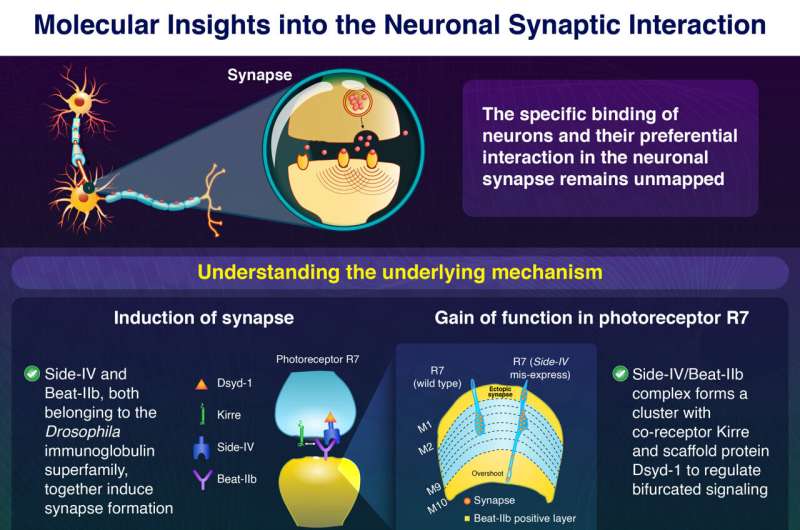This article has been reviewed according to Science X's editorial process and policies. Editors have highlighted the following attributes while ensuring the content's credibility:
fact-checked
peer-reviewed publication
trusted source
proofread
A molecular route to decoding synaptic specificity and nerve cell communication

Neurons or nerve cells are the fundamental components of the central nervous system and are critically involved in signal transduction pathways. Transmission of information or signal from one neuron to another requires the establishment of a neuronal synapse: either chemical (neurotransmitters) or electrical (protein channels and ions). However, little is known about the underlying mechanism regarding the binding specificity and the ability to form preferential interactions between neuronal pairs.
In this regard, a team of researchers from Japan, led by Associate Professor Takashi Suzuki from the School of Life Science and Technology at Tokyo Institute of Technology (Tokyo Tech), recently attempted to unravel the molecular mechanisms behind the complex neuronal communication circuit.
Dr. Suzuki explains, "Take, for example, a person driving an automobile. The precise and rapid communication between the driver's perception and the locomotor system can be the difference between life and death. The appropriate functioning of the nervous system ultimately comes down to a precise synaptic interaction between different types of neurons.
"Hence, our group focused on studying the molecular mechanisms of synaptic specificity using Drosophila, which allowed a genotypic as well as phenotypic assessment."
The researchers employed a combination of genomic and interactome (protein–protein interactions) analyses to identify the molecular mechanisms involved in synaptic communication.
The results revealed that the specific interaction of Side-IV/Beat-IIb immunoglobulin superfamily protein molecules was responsible for inducing the formation of synapse. This combination of Side-IV/Beat-IIb was central to the synaptic specificity between neurons. Side-IV/Beat-IIb, along with Side-IV's co-receptor, Kirre, and Dsyd-1, a synaptic scaffold protein, formed a cluster to regulate a preferential signaling mechanism among neuron pairs.
The research findings were published in Cell Reports.
Knockdown studies of synaptic scaffold protein Dsyd-1 and Liprin-α revealed the suppression of synapse formation. Moreover, Side-IV protein interaction with Dsyd-1 led to the formation of an active zone and resulted in a higher preference for synapse formation between specific neurons, thereby preventing miswiring.
Dr. Suzuki says, "We believe that our study can contribute to our current understanding of neuronal synapse and hierarchical ranking interactions among neuronal pairs. Future research involving higher order mutant species can build on our study to address the neurodegenerative disease landscape and aid in developing therapeutic strategies in the long term."
Overall, this study sheds valuable light on the molecular intricacies of neuronal communication.
More information: Jiro Osaka et al, Complex formation of immunoglobulin superfamily molecules Side-IV and Beat-IIb regulates synaptic specificity, Cell Reports (2024). DOI: 10.1016/j.celrep.2024.113798





















